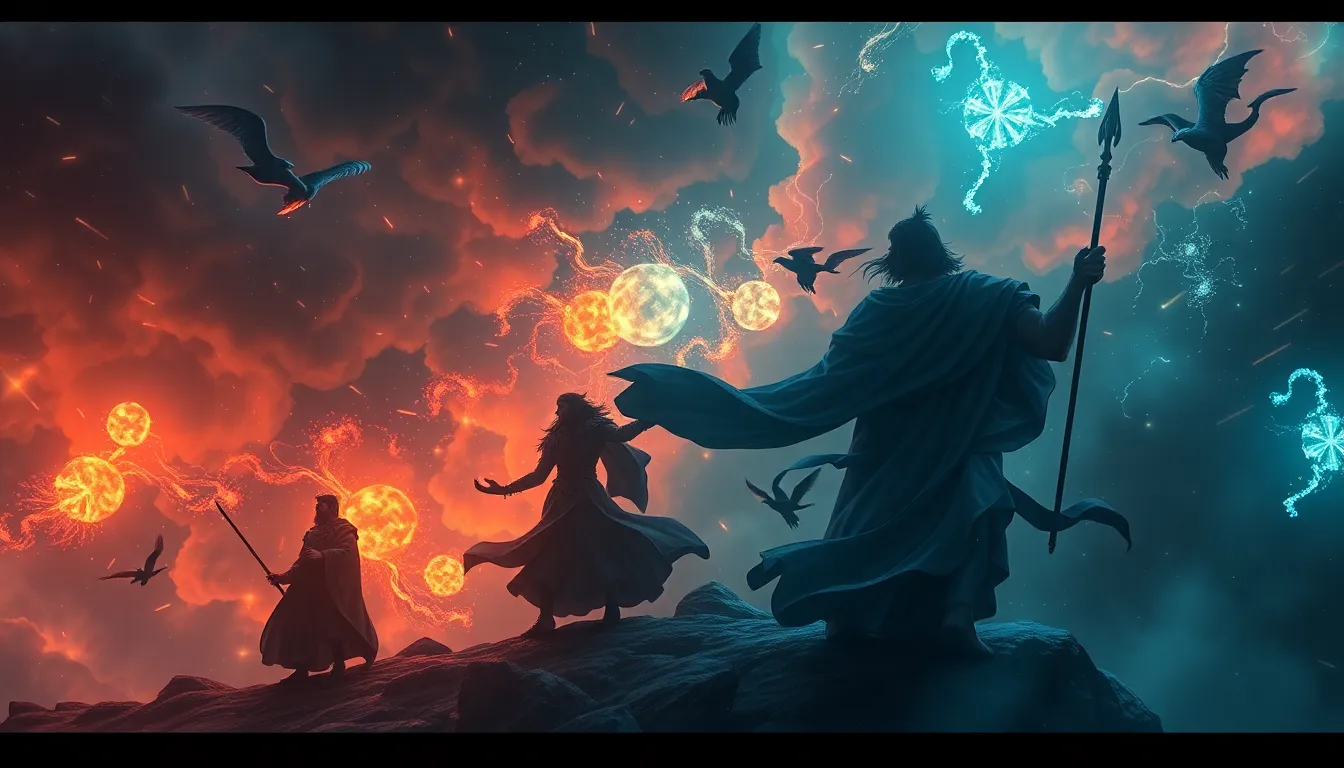The Trickster’s Influence on Modern Storytelling
Introduction to the Trickster Archetype
The trickster archetype is a compelling figure that appears in various mythologies and folklore across the globe. Defined as a character who uses wit and cunning to outsmart others, the trickster embodies a paradoxical nature, often oscillating between heroism and villainy. Characteristics of the trickster include cleverness, playfulness, and a penchant for deception, which serve both to entertain and to challenge societal norms.
Historically, tricksters have played significant roles in cultures worldwide. For instance, Loki in Norse mythology is known for his mischievous behavior and ability to shape-shift, while Anansi, the spider from African folklore, is celebrated for his storytelling prowess and cunning. These figures illustrate the universal appeal and versatility of the trickster archetype throughout human history.
The Trickster’s Role in Traditional Narratives
In traditional narratives, the trickster serves multiple functions, including that of a disruptor, teacher, and cultural critic. As a disruptor, the trickster challenges the status quo, creating chaos that often leads to new insights and revelations. This aspect is critical in stories where the trickster’s actions lead to transformative experiences for other characters.
Tricksters are also teachers, imparting wisdom through their antics. They often reveal deeper truths about the human condition, prompting both characters and audiences to reflect on their own lives. Common themes associated with tricksters include:
- Deception
- Transformation
- Paradox
These themes highlight the complexity of the trickster’s character, emphasizing their role in navigating life’s uncertainties and contradictions.
The Evolution of the Trickster in Literature
The trickster’s presence can be traced back to classical literature, where figures like Odysseus in The Iliad and the characters in The Decameron exemplify the archetype. These early representations reveal how tricksters use their intelligence and charm to navigate challenges, often blurring the lines between right and wrong.
As storytelling transitioned from oral traditions to written forms, the trickster adapted to new contexts. The written word allowed for deeper character exploration and more complex narratives, enabling authors to experiment with the trickster’s role in society and culture.
The Trickster in Contemporary Storytelling
Today, the trickster archetype is prevalent in modern literature, film, and television. Contemporary works often reimagine trickster figures to reflect current societal issues and cultural dynamics. Notable trickster characters include:
- Spider-Man: A hero who balances his responsibilities with a playful, irreverent attitude.
- Deadpool: Known for breaking the fourth wall and subverting traditional superhero narratives.
- The Joker: A chaotic force that challenges societal norms and exposes the absurdity of life.
These characters demonstrate how the trickster continues to evolve, addressing themes of morality, identity, and social critique.
Psychological and Cultural Significance of the Trickster
The trickster archetype holds substantial psychological and cultural significance. Representing the complexities of human nature, tricksters often embody the tensions between order and chaos, conformity and rebellion. They challenge societal norms and authority, prompting audiences to question established beliefs and practices.
As symbols of rebellion, tricksters resonate with those who feel marginalized or oppressed. Their stories offer a means of coping with societal constraints and inspire individuals to embrace their unique identities.
The Trickster in Digital Storytelling
In the realm of digital storytelling, the trickster archetype has found new life in video games and interactive narratives. Characters that embody trickster traits often engage players in creative problem-solving and unexpected twists. Games like Portal and Undertale feature trickster elements that challenge players’ perceptions and expectations.
Social media has also played a significant role in the evolution of trickster characters, allowing for the rapid dissemination and remixing of narratives. Memes and viral content often feature trickster-like humor and commentary, reflecting the archetype’s adaptability in contemporary culture.
The Trickster and Humor in Storytelling
Humor is a vital tool employed by trickster figures to challenge societal norms and provoke thought. Through witty dialogue and absurd situations, tricksters highlight the incongruities of life and encourage audiences to reconsider their perspectives. Comedy serves as a coping mechanism, allowing characters and audiences to navigate complex emotions and experiences.
Tricksters often use humor to break down barriers, fostering connection and understanding among individuals from different backgrounds. This comedic approach makes the trickster an essential figure in storytelling, bridging gaps between cultures and experiences.
Comparative Analysis: Tricksters Across Cultures
The trickster archetype varies across cultures, each embodying unique characteristics and narratives. For example, while Anansi is celebrated for his clever storytelling, the Native American coyote trickster often highlights themes of survival and adaptability. Despite these differences, similarities abound:
- Tricksters frequently challenge authority and social norms.
- They often possess a dual nature, embodying both good and evil.
- Tricksters play a crucial role in imparting cultural wisdom and values.
This comparative analysis illustrates the universal nature of the trickster, emphasizing its significance in global storytelling traditions.
The Future of the Trickster in Storytelling
As society continues to evolve, so too will the trickster archetype. Future representations of tricksters are likely to reflect ongoing cultural shifts and the complexities of modern life. The rise of new mediums, such as virtual reality and augmented reality, will offer fresh opportunities for trickster narratives to thrive and engage audiences in innovative ways.
Moreover, as social issues and global challenges come to the forefront, tricksters will remain essential in critiquing and questioning authority, providing a voice for those seeking change.
Conclusion: The Enduring Legacy of the Trickster
The trickster’s influence on storytelling is profound and enduring. From ancient myths to modern narratives, tricksters have consistently challenged norms, provoked thought, and entertained audiences. Their ability to navigate the complexities of human experience reflects our own struggles and triumphs, making the trickster archetype a vital aspect of understanding creativity and identity.
As we continue to explore the depths of storytelling, the trickster will undoubtedly remain a powerful symbol of rebellion, wisdom, and the transformative power of humor.



